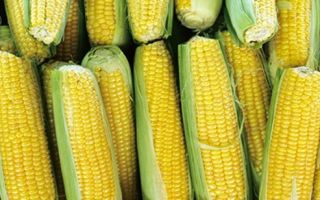A gluten-free diet is a diet that completely eliminates foods containing gluten.
Content
What is a gluten-free diet?
To treat celiac disease , you need a diet that meets the following conditions:
- complete exclusion of products made from wheat, rye, barley, oats (bread, pasta, semolina, confectionery products containing flour, some sauces),
- physiologically complete,
- increased protein content,
- increased content of calcium salts,
- the diet should contain products that are mechanically and chemically gentle on the gastrointestinal tract,
- products that increase fermentation processes in the intestines are excluded,
- substances that stimulate the secretion of the stomach, pancreas,
- limiting foods that are bad for the liver.
Cooking
All foods must be steamed or boiled. Depending on the functional state of the intestines, food is given pureed (for diarrhea) or without grinding (for normalization of stool).
Chemical composition and energy value of the diet
Per day you need to consume:
- proteins 140 g,
- fat 120 g,
- carbohydrates 450-500 g,
- calorie content 3327-3514 kcal.
The temperature of hot dishes is 57-62ᶛС, cold dishes - at least 15ᶛС.
Number of meals: 5-6 times a day (mashed version),
3-4 times a day (non-mashed version).
List of dishes
- Bread and bakery products . You can eat cookies, pancakes, pancakes, cakes made from rice, corn and buckwheat flour, corn and rice flakes.
- Soups . Prepared in a weak meat or fish broth with meat or fish meatballs, quenelles, egg flakes, rice, finely chopped vegetables (potatoes, carrots, cauliflower, zucchini, pumpkin).
- Meat and fish dishes . To prepare dishes, low-fat varieties of meat and fish, skinless poultry (beef, chicken, turkey, rabbit, bream, cod, hake, ice cod, carp, blue whiting, pollock, etc.) boiled or steamed are used. Tender varieties of meat and poultry are prepared in pieces, beef - minced without bread, you can add rice cooked until half cooked.
- Vegetable dishes and side dishes . Vegetable purees from potatoes, carrots, zucchini, pumpkin, and boiled cauliflower are allowed as side dishes.
- Dishes and side dishes from cereals . Porridges are prepared in water with the addition of 1/3 milk, pureed (buckwheat, rice, corn). Puddings can be made from these grains.
- Egg dishes . Steam omelettes are allowed.
- Sweet dishes, sweets, fruits, berries . Kissels, jellies, mousses, pureed compotes from fresh sweet varieties of berries and fruits (apples, pears, raspberries, blueberries, wild strawberries, bird cherry, quince). Baked apples and pears. Jams and jams from the berries and fruits listed above. Snowballs, meringues. Sugar.
- Milk, dairy products and dishes made from them . Cottage cheese is non-acidic, fresh in its natural form and in dishes. Steam puddings with cereals and vegetables listed above, curd puddings with the addition of rice flour instead of wheat. If well tolerated, kefir, yogurt, milk and cream with tea in small quantities (50 g per glass). Non-acidic sour cream (15 g per serving) in dishes.
- Sauces . Milk sauce made with rice flour, fruit sauces.
- Beverages . Tea, rose hip decoction, sweet fruit and berry juices mixed with water.
- Fats . Add butter to prepared dishes for the table, only 50 g during the day.
- Snacks . Mild cheese, jellied fish, meat, poultry, boiled tongue, soaked herring (once a week).
Finished Products
You must be careful when purchasing ready-made products and carefully study the composition. Many products contain small amounts of wheat flour. For example, it can be contained in yoghurts, instant coffee, etc.
Precautions in the kitchen
If only some members of a family are on a gluten-free diet, then special precautions should be taken to ensure that gluten is not accidentally introduced into their food.
- Label all gluten-free products or store them separately to avoid mix-ups during preparation.
- It is necessary to thoroughly clean all kitchen appliances, especially pots, pans, and bowls.
- Clean all work surfaces and wash your hands thoroughly before preparing gluten-free food.
- Use different colored cutting boards for regular foods and gluten-free diets.
- Do not use kitchen utensils made of porous materials such as wood and plastic, replace them with glass and silicone.
- Use different baking forms.
Such strict measures are necessary, since even a small amount of gluten entering the body of a sick person can greatly harm him.







